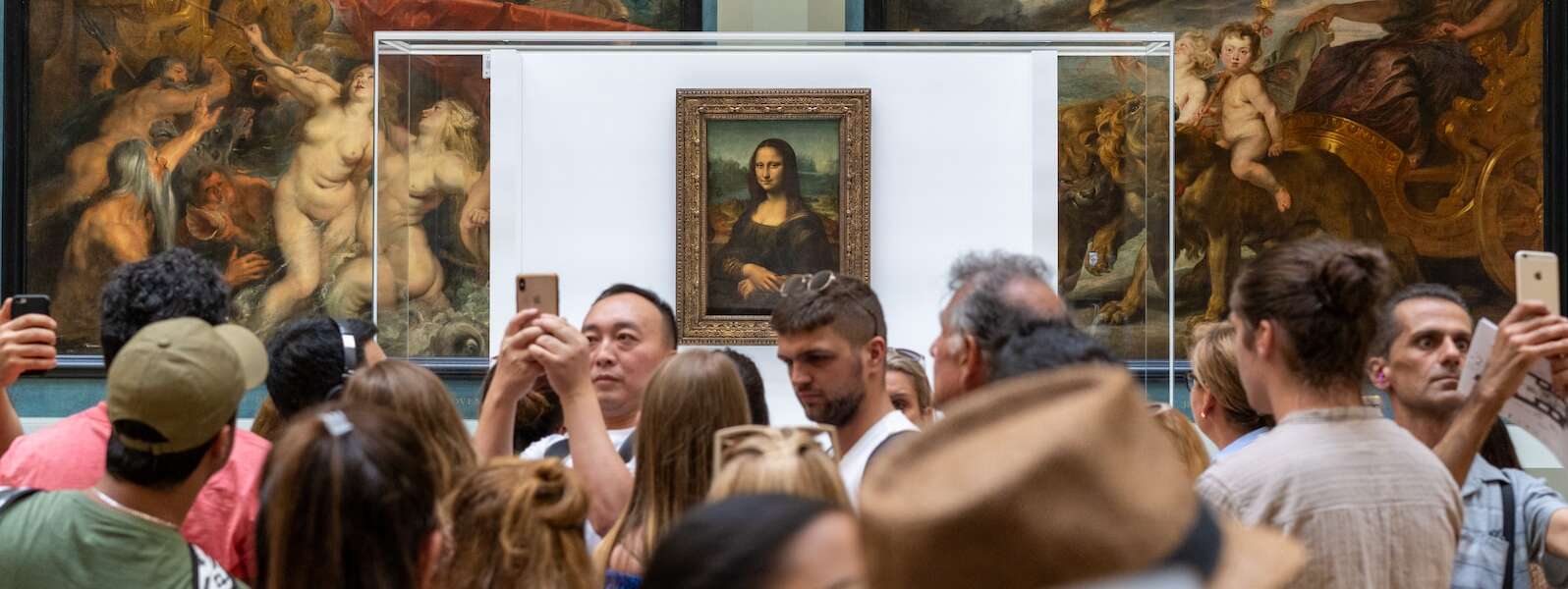By Dr. Sally Hickson, School of Fine Art and Music
This article is republished from The Conversation Canada under a Creative Commons licence. Read the original article.
In the last few weeks, climate change activists have perpetrated various acts of reversible vandalism against famous works of art in public galleries.
In the latest incident on Oct. 27, two men entered the Mauritshuis gallery in the Hague. After taking off their jackets to reveal t-shirts printed with anti-oil slogans, one proceeded to glue his head to glass overtop Johannes Vermeer’s Girl with a Pearl Earring, while the other bathed the head of his partner-in-crime with what appeared to be tinned tomatoes before gluing his own hand to the wall adjacent to the painting.
This was just the latest in a series of similar art attacks that have peppered the news.
The motivation of the eco-activists involved is to draw attention to the crisis of climate change, the role of big oil in hastening the deterioration of the environment and the necessity to save our planet.
By attacking a famous and high-value cultural target like Vermeer’s Girl with a Pearl Earring — it even starred in its own movie — the protesters are asking us to examine our values.
Big oil protests

The first Vermeer painting to come to auction for almost 80 years sold for almost $40 million in 2004. Today a Vermeer (there are not that many) could easily be valued at twice that. Whether you like Vermeer or not, the monetary value of the targets under attack enhances the sheer audacity and shock value of the current art attacks.
The eco-activists want to appear to desecrate something that people associate with value and with culture. Their point is that if we don’t have a planet, we’ll lose all the things in it that we seem to value more.
As activist Phoebe Plummer of Just Stop Oil told NPR after being involved in the attack on Van Gogh’s Sunflowers at London’s National Gallery:
“Since October, we have been engaging in disruptive acts all around London because right now what is missing to make this change is political will. So our action in particular was a media-grabbing action to get people talking, not just about what we did, but why we did it.”
Note, the idea is disruption, not destruction. As acts designed for shock value, the activists did draw immediate public attention.
Attacking art
By staging their attacks in public galleries, where the majority of visitors carry cell phones, activists could be assured film and photos of the incidents would draw immediate attention. By sticking to non-corrosive substances and mitigating damage to the works under attack, they don’t draw the kind of public ire that wilful destruction would evoke.
In recent news, attacking art as a form of public protest has largely been limited to public monuments outside the gallery space, like the destruction and removal of Confederate or colonial statues.
But it’s also true that works of museum art have come under attack before. Over the course of its history, Rembrandt’s Night Watch in the Rijksmuseum in Amsterdam was stabbed in two separate incidents in 1911 and 1975; in 1990, it was sprayed with acid; but all of those attacks were ascribed to individuals with unclear and less clearly rational motives.
I see a few issues at stake with assessing what these recent art attacks could mean.
1. How effective is the messaging?
The activists have been articulate about their objectives, but those objectives haven’t been obvious to everyone who sees via social media, but doesn’t stick around to hear the explanation. When a broad range of media outlets all perceive the need to publish editorials on why eco activists are targeting art, something is getting lost in translation.
People see the endangerment of the works of art, but may ascribe that to the activists, not to the planetary erosion wrought by climate change. I don’t think everyone is getting the message.
2. Possible misplaced outrage
The incidents up until now have been pretty effective and harmless acts. But what if something is irreparably damaged? People will be outraged, but they’ll still be outraged about the art, not about the planet.
And while there will be a call for stiff prison sentences, precedent suggests that’s an unlikely outcome.
A man who damaged a Picasso valued at $26 million USD at the Tate Modern in London in 2020 was sentenced to 18 months in jail.
3. Violation of public trust
The third effect is what I consider a violation of the public trust, and this gives me pause. Works of art, even the most famous ones, lead precarious lives of constant endangerment; war, weather, fire, floods. The protesters are destabilizing the idea that public galleries are “safe” spaces for works of art, held in public trust.
As fari nzinga, inaugural curator of academic engagement and special projects at the Speed Art Museum in Louisville, KY, pointed out in a 2016 paper:
“The museum doesn’t serve the public trust simply by displaying art for its members, it does so by keeping and caring for the art on behalf of a greater community of members and non¬members alike, preserving it for future generations to study and enjoy.”
Right now these acts, no matter how well-intentioned, could lead to increased security and more limited access, making galleries prisons for art rather than places for people.
At the same time, part of the activsts’ point is that economy that sustains big oil is entwined with arts infrastructure and the art market.
The pandemic taught us, I think, that art could be the thing we share that saves us; think of people during quarantine in Italy singing opera together from their balconies.
Eco-activists engaged in performance protests ask us to question our public institutions and make us accountable for what they, and we, value. Their climate activism is dedicated to our shared fate.
If you’re willing to fight for the protection of art, maybe you’re willing to fight to protect the planet.
Conversation Canada is always seeking new academic contributors. The University of Guelph researchers wishing to write articles should contact Angela Mulholland, News Service Officer, at media@uoguelph.ca
